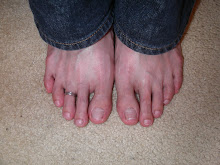Hume thinks that there are five qualities that ought to be possessed by an art critic. 1. The first quality an art critic requires is what Hume termed as ‘delicacy’. A critic must be able to discriminate the fine and intricate details of an art work. Expressed in another way, a critic must exercise finesse when judging and not be affected by just the ‘grosser and more palpable qualities’ of the piece of work. 2. A critic needs to practice often. When he exposes himself to frequent assessment and contemplations of a certain type of beauty in art, the easier and better he will be at discerning them. He gradually becomes more capable of drawing out its merits and defects without making mistakes. As he becomes increasingly experienced, the speed and clarity in which he judges will also increase accordingly and will no longer be as confused as he initially was. 3. In order to practice however, a critic must have access to other art works of various degrees of excellence. They serve their purpose as a form of comparison; only in estimating their qualities relative to each other can there be an opinion or judgment. Therefore a critic improves with the amount of comparing he conducts between art works. 4. The fourth quality that is required of a critic is that he be free from all prejudices. This “neutral” state of being enables him to concentrate only on the object under scrutiny, allowing nothing to come in between them. If any person is influenced by prejudice, he is unable to make a true judgment in accordance with absolute partiality. 5. The last quality a critic must possess is the ability for good sense. In good sense Hume meant that a critic must be able to exercise good reasoning abilities and sound understanding of the subject matter, such that he is able to maintain an overall grasp of the task at hand. This quote from Hume combines and summarises the five above mentioned points: ‘Strong sense, united to delicate sentiment, improved by practice, perfected by comparison, and cleared of all prejudice, can alone entitle critics to this valuable character.’ Whenever they are combined, it constitutes ‘the true standard of taste and beauty.’
These qualities are somewhat skills that can somehow be acquired in some way or other and therefore would understandably result in varying degrees in different critics of differing mental aptitudes. Hume accedes that this disparity in judgments about art results from the fact that not all critics, even the best of them, will be able to elicit a universal agreement due to two main reasons. The first results from the difference in the characters of different persons; it can be empathised that a young man would prefer something of a livelier nature as compared to an older man who prefers something wise and more contemplative in nature. The second reason is due to the differing cultural differences; we can hardly send an Asian man who has been brought up accustomed to eating rice as his staple food to assess the taste of meat and potatoes typical of the European diet. Hence a critic who is able to overcome such differences and relate well to the relevant context will be able to make better judgments about art.
Subscribe to:
Post Comments (Atom)

No comments:
Post a Comment